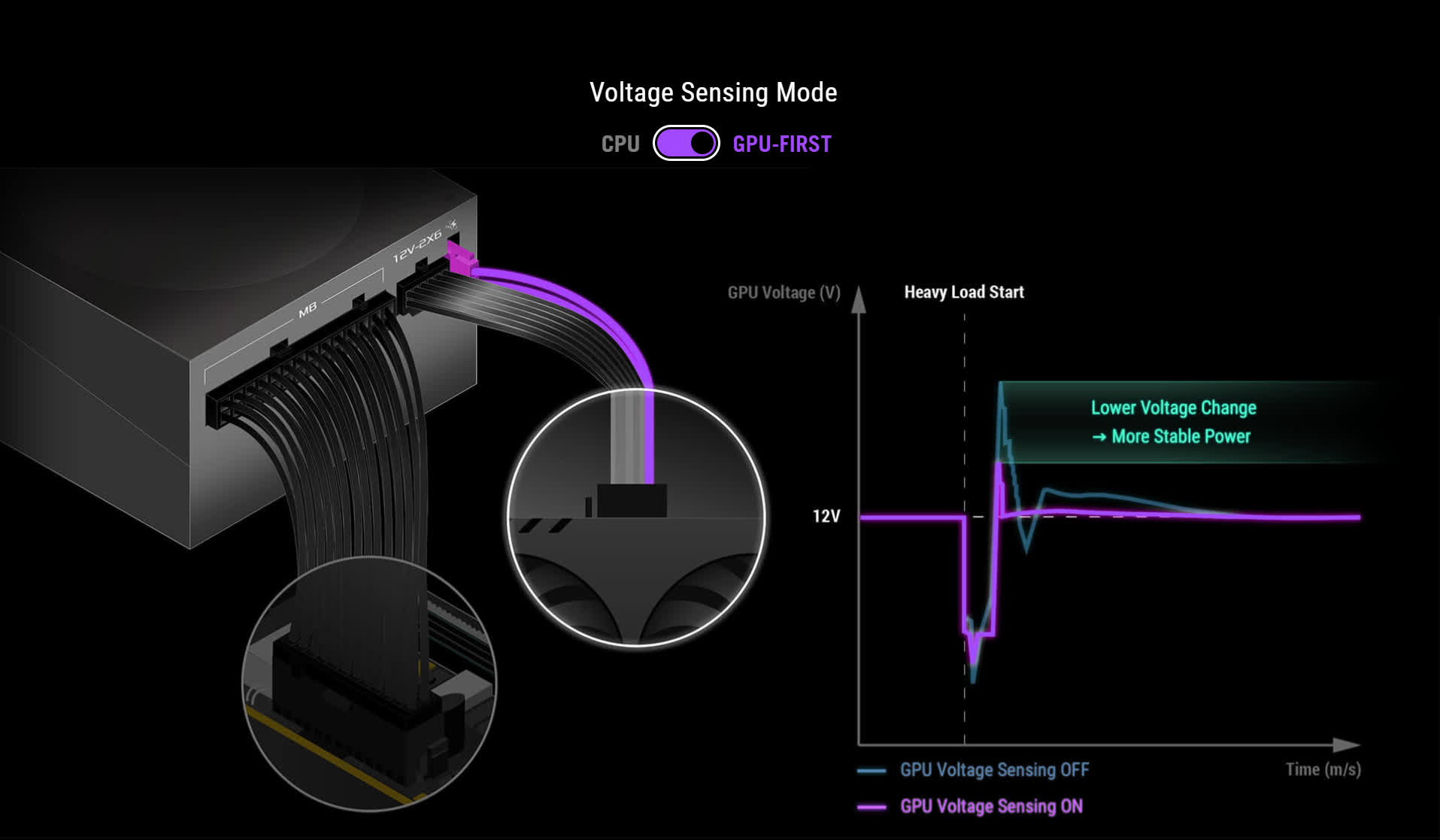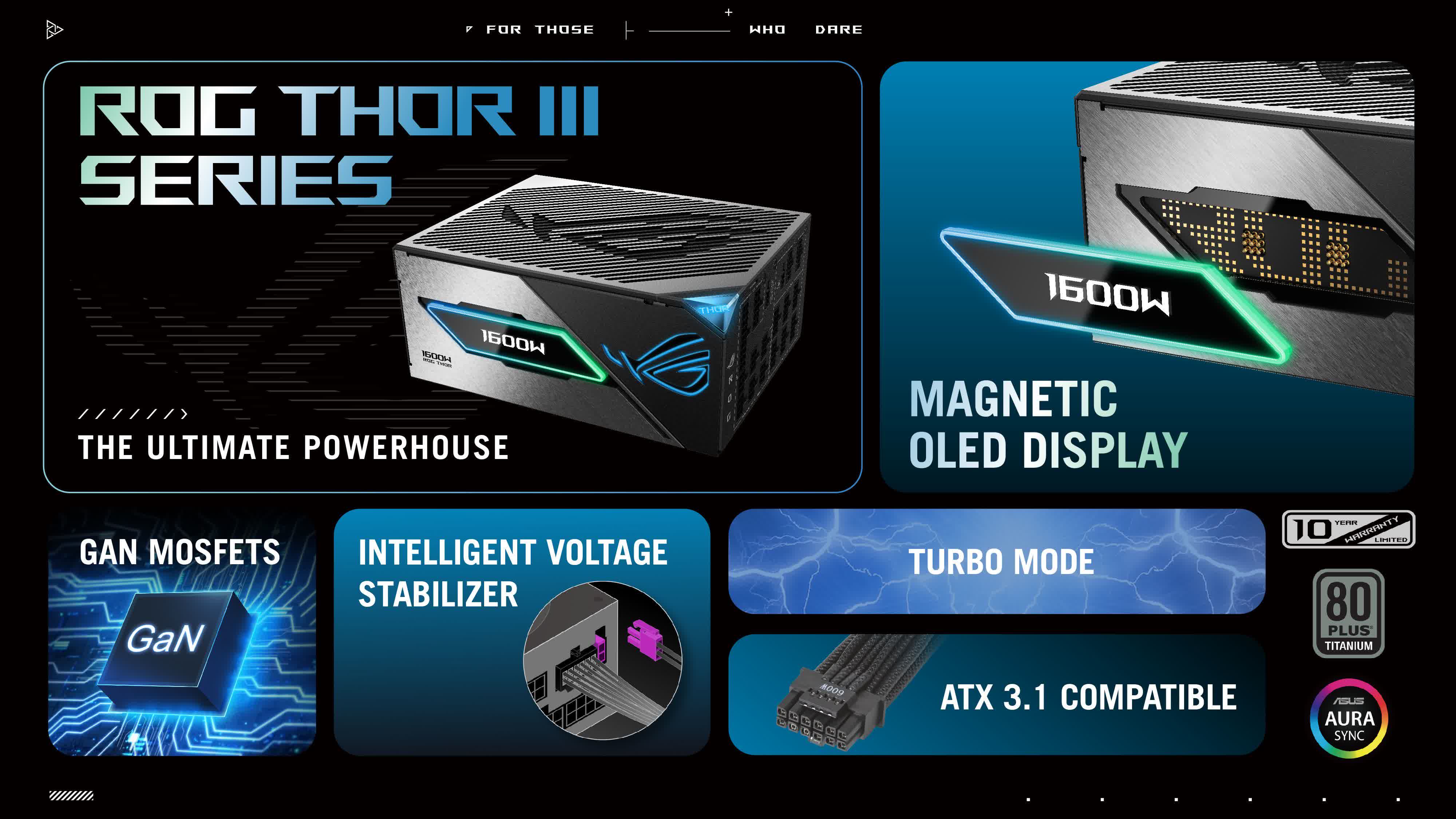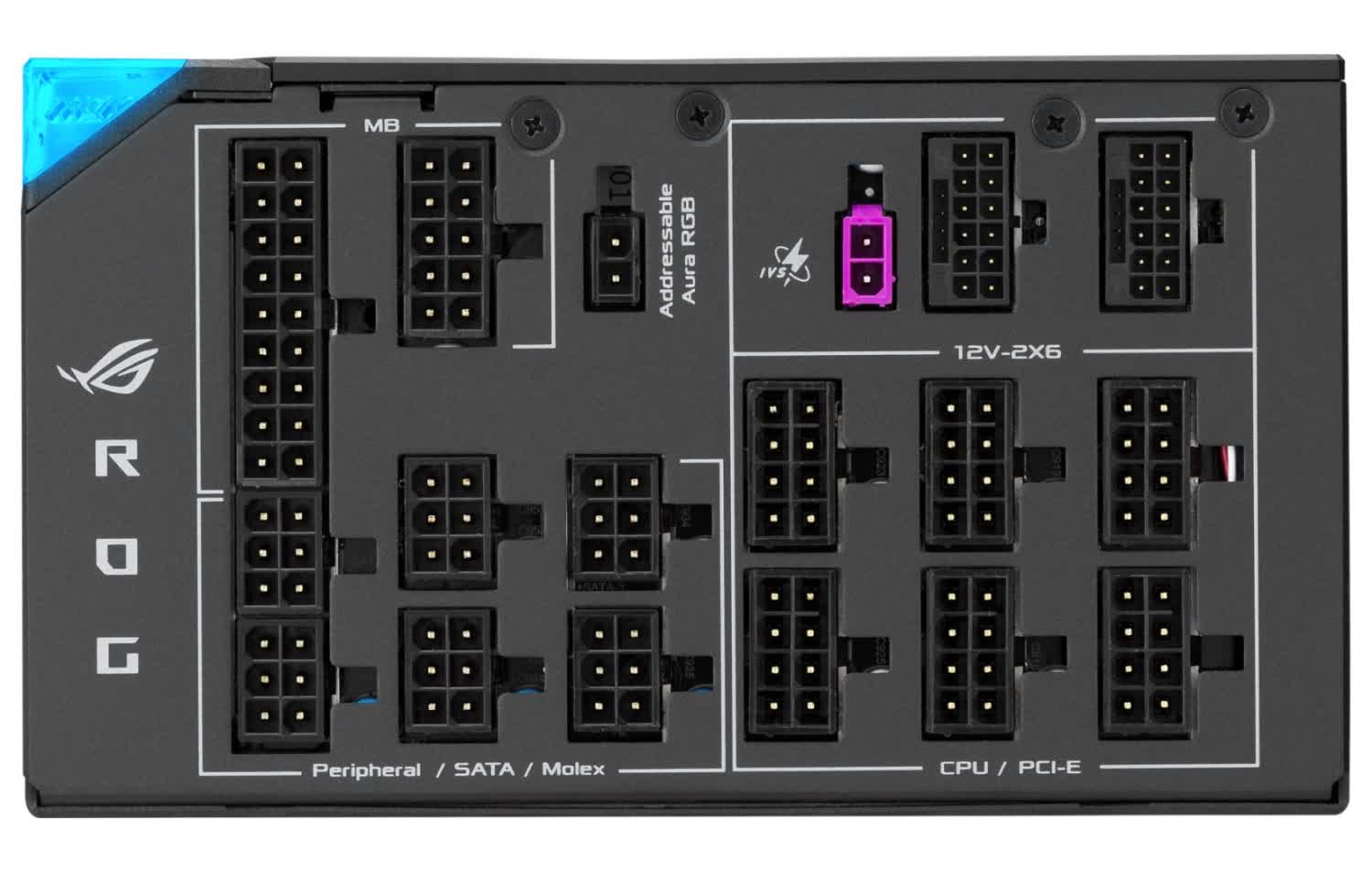TL;DR: Power supply units rarely attract as much attention as components like GPUs or CPUs, as their feature sets tend to be less distinctive. However, the latest Asus ROG Thor series aims to stand out with an unusual addition that could help DIY builders monitor their PCs more easily.
Asus recently unveiled its ROG Thor III series of ATX 3.1 power supplies, which includes three models ranging from 1,000W to a massive 1,600W. The lineup boasts various features designed to improve power delivery and efficiency, reduce noise, and monitor wattage in real-time.
The most distinctive feature of the Thor III series is its modular OLED display, which allows users to check power consumption at any given moment by simply glancing at the PC.
Monitoring power draw typically requires third-party software, especially when users want to track it while playing resource-intensive games. Integrating a monitoring tool directly into the PSU could simplify tasks like overclocking or optimizing power efficiency.

However, the idea of a wattage tracker on a PSU isn't entirely new. In 2021, Gigabyte introduced a 1,200W Aorus PSU with a large LCD screen that displays power draw, along with text, pictures, and even MP4 videos.
Still, the ROG Thor III display has an additional feature – it's detachable. The magnetic screen can attach to either side of the PSU, ensuring visibility whether the unit is installed fan-up or fan-down.
The Thor III series also introduces Asus' GPU-first voltage-sensing technology, which detects voltage based on the needs of the graphics card rather than the processor. This allows the PSU to respond more quickly to the GPU demands, with Asus claiming that this feature improves voltage delivery by 45 percent.
Additionally, a turbo mode (a different kind of turbo) uses a specialized fan curve and premium components to extend peak load times. The ROG Thor III PSUs feature aluminum enclosures, low-ESR capacitors, and modular cables. Dual ball-bearing fans ensure up to 80,000 hours of operation.
The 1,000W and 1,200W models carry an 80 Plus Platinum certification, while the 1,600W unit is 80 Plus Titanium certified. The 1,600W model also boasts Cybenetics Lambda A+ noise certification.
Although Asus has published product pages for the 1,200W and 1,600W models, pricing and release details remain unclear. The 1,200W unit measures 190 x 150 x 86 mm, while the 1,600W model is slightly larger at 200 x 150 x 186 mm.
New Asus ROG Thor III PSUs sport an OLED screen to track power draw

